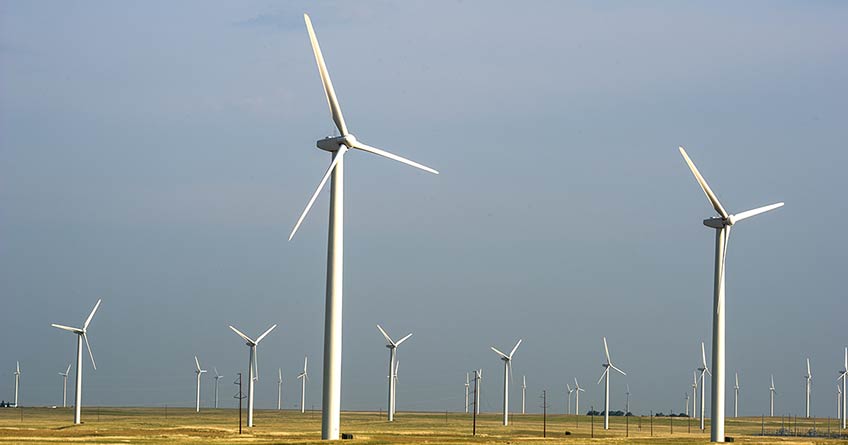New Open-Source Model Works to Improve Wind Power Plant Cost Estimation and Design
The contiguous United States has the technical resource potential to generate up to 32,700 terawatt-hours of electricity per year—more than eight times the amount of electricity consumed in the United States in 2018. However, significant cost and performance improvements in wind power technology are needed for the wind industry to reach this potential.
That’s where NREL’s Land-based Balance of System Systems Engineering (LandBOSSE) tool can help. This open-source model, now publicly available, will provide researchers, analysts, wind power developers, government agencies, and the public with a flexible tool that can be used to estimate the balance-of-system (BOS) costs associated with onsite wind power plant construction at land-based wind plants.

BOS costs—the costs to perform site preparation, construct foundations, install electrical infrastructure, and construct the tower—currently account for approximately 30% of the capital expenditures needed to install a land-based wind plant. And the relative importance of BOS costs is expected to increase as the cost of wind turbine hardware decreases.
“Because BOS costs for wind plants can vary widely by site and installation strategy, it’s important for wind energy developers to understand and explore how factors such as labor rates, foundation designs, and turbine installation methods might impact a project’s total investment costs,” said Annika Eberle, NREL Principal Investigator for the LandBOSSE tool. “LandBOSSE can help by allowing users to estimate how BOS costs might differ when aspects of a plant’s design or construction rates change.”
Eberle and a team of NREL researchers developed LandBOSSE in response to the need for mid-fidelity model that can provide flexibility for assessing wind plant BOS costs at a system level. Formulated using market research, industry data, pricing trends, and insights from experienced land-based wind plant developers, LandBOSSE helps users explore tradeoffs between innovative design scenarios while balancing the level of detail and speed required for model execution.
As described in more detail in a recent National Renewable Energy Laboratory (NREL) report, the model is based on a bottom-up, process-based assessment of inputs and outputs associated with each BOS operation and, where needed, is supplemented by top-down estimates of costs from industry. The current version of LandBOSSE features process-based capabilities for four modules: foundations, site preparation, erection, and collection system. This modular approach allows for future expansion that could enable the exploration of a variety of plant sizes, locations, and site-specific parameters, along with different types of tower technologies, turbines, and foundation designs.
Researchers developed the LandBOSSE tool with funding provided by the U.S. Department of Energy Office of Energy Efficiency and Renewable Energy's Wind Energy Technologies Office. The research team also partnered with several industry leaders, including Mortenson, RES, Wind Tower Technologies, and Apex, who reviewed the model and supported its validation efforts. The LandBOSSE model is also currently being integrated into NREL’s Wind-Plant Integrated System Design and Engineering Model (WISDEM) and NREL’s System Advisor Model (SAM) to improve accessibility and connectivity of the model with other NREL tools.
Last Updated May 28, 2025
